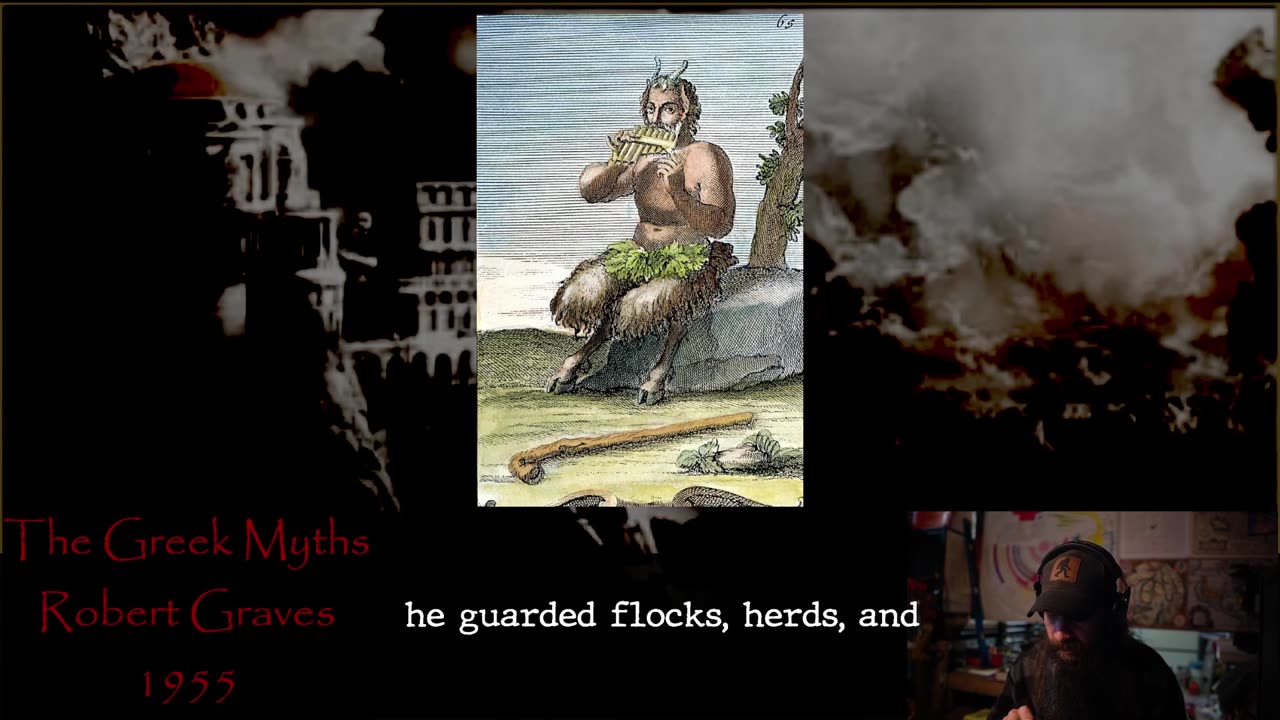Premium Only Content

The Greek Myths - B1 - 26
The Greek Myths - B1 - 26
This chapter discusses the mythological figure Pan, elaborating on his nature, parentage, and various stories associated with him. It describes Pan's dual character as both a playful satyr and a powerful but often disrespected deity among the gods. The tales highlight his relationships with various nymphs, his role in Arcadian culture, and his decline as a deity in later times.
Key Points:
Parentage of Pan
The origins of Pan are complex and varied, with several myths attributing his parentage to major gods like Hermes and Zeus, and even mundane beings like a woodpecker. Pan is depicted as a unique figure in mythology, capturing the essence of nature and fertility.
Pan's Character and Role
Pan is characterized as a mischievous and easygoing figure who resides in Arcadia, embodying a connection to nature. He is known for his laziness and playful revenge on those who disturb him, reflecting a carefree life intertwined with pastoral elements.
Relationships and Myths
Pan's relationships with various nymphs are central to his stories, showcasing his seduction and adventures. Notably, he is linked to figures like Ekko and Selene, illustrating both the whimsical and darker sides of his character.
Cultural Significance
Despite being ridiculed by the higher Olympian gods, Pan played a vital role in rural Arcadian culture as a guardian of herds and nature. He represented themes of fertility and the wild, reflecting ancient beliefs and customs tied to nature.
The Death of Pan
Pan's demise is symbolically represented through stories of Thamus, who was instructed to announce Pan's death. This event echoes the transition from ancient pagan beliefs to the rise of monotheistic religions, marking a cultural shift and the decline of nature-based worship.
-
 LIVE
LIVE
Bannons War Room
7 months agoWarRoom Live
12,333 watching -
 LIVE
LIVE
Benny Johnson
51 minutes ago🚨James Comey INDICTED for Perjury and Obstruction, Years In JAIL | 275 FEDS in January 6th Crowd
4,972 watching -
 1:35:48
1:35:48
Dear America
2 hours agoBOMBSHELL: 274+ Feds Where in The Crowd On Jan 6th!! + James Comey Finally INDICTED!!
103K73 -
 LIVE
LIVE
Badlands Media
5 hours agoBadlands Daily: September 26, 2025
3,490 watching -
 LIVE
LIVE
Matt Kohrs
12 hours agoPCE Inflation Report, BTFD & Payday Friday || Live Trading Stock Market Open
566 watching -
 LIVE
LIVE
Wendy Bell Radio
5 hours agoWelcome To The "Find Out" Phase
7,452 watching -
 LIVE
LIVE
GritsGG
1 hour agoQuad Win Streaks!🫡 Most Wins in WORLD! 3600+
73 watching -
 56:54
56:54
Crypto Power Hour
2 hours agoSpecial Guest Natalie Brunell, Author & Bitcoin Maxi
9.77K7 -
 LIVE
LIVE
Total Horse Channel
14 hours agoAMHA 2025 World Show 9/26
279 watching -
 LIVE
LIVE
LFA TV
17 hours agoBREAKING NEWS ALL DAY! | FRIDAY 9/26/25
2,931 watching